Reframing MASTER OF THE ANNUNCIATION TO THE SHEPHERDS Venus asking Vulcan to make arms for Aeneas, for a private client
Posted: 07 May 2017 by PML
The 'Master of The Annunciation to the Shepherds', was an anonymous painter active in Naples between 1620 -1640 and generally known for depicting scenes of the angels informing the shepherds about the birth of Jesus.
The subject of this painting however portrays the goddess of love, Venus, asking her husband, Vulcan, to make a set of armor for Aeneas, her son, who is about to go to war.
Our client recognised their picture could benefit from a change in frame. Taking into account the nationality of the artist, period of the work, and the aesthetics of our client’s interior, we identified a number of suitable alternatives (see below).
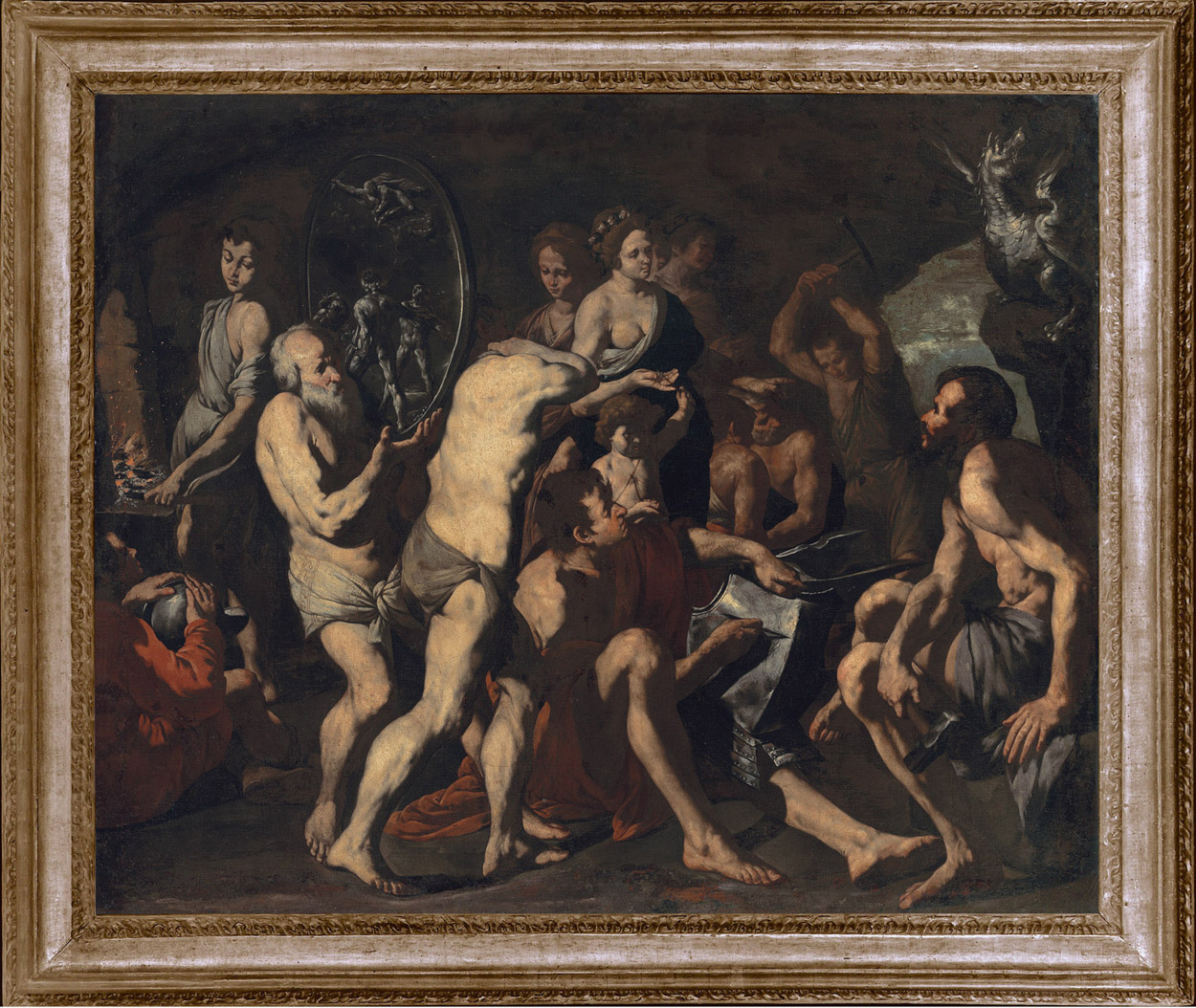
17th century Neapolitan exceptionally rare ‘Salvator Rosa' frame with carved stylised gadrooned leaves at sight and back; lacquered silverleaf (‘Meca’) finish
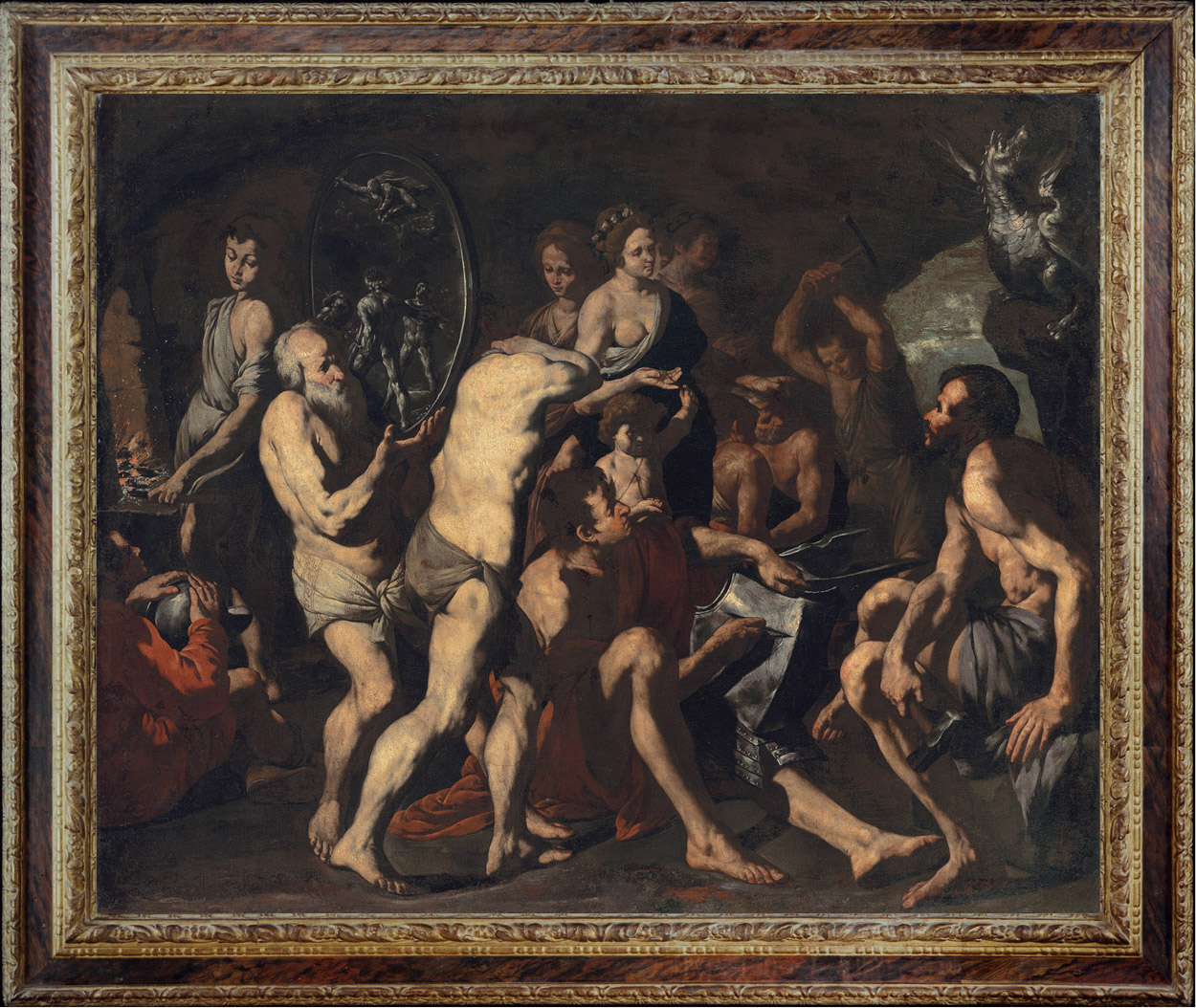 17th century Italian (most likely southern) rare reverse cassetta - architrave frame, with carved torus of centred scrolling foliage and fruit; astragal-&-triple bead; stylised leaf back; water gilding and marbling
17th century Italian (most likely southern) rare reverse cassetta - architrave frame, with carved torus of centred scrolling foliage and fruit; astragal-&-triple bead; stylised leaf back; water gilding and marbling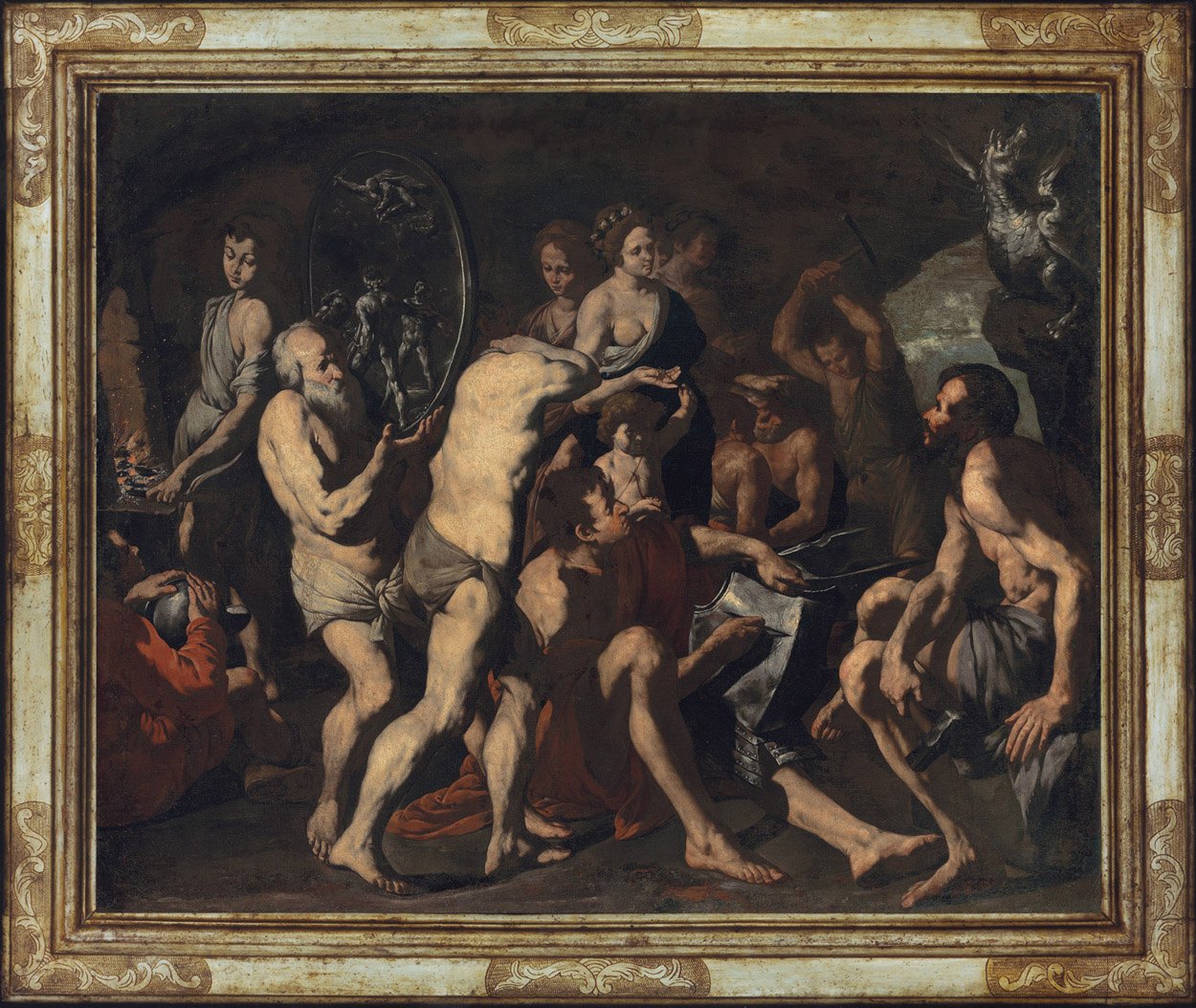
17th century Spanish reverse cassetta - architrave frame with incised stylised foliate scrolls on a hassled ground at corners and centres; lacquered silver leaf (‘Meca’) finish
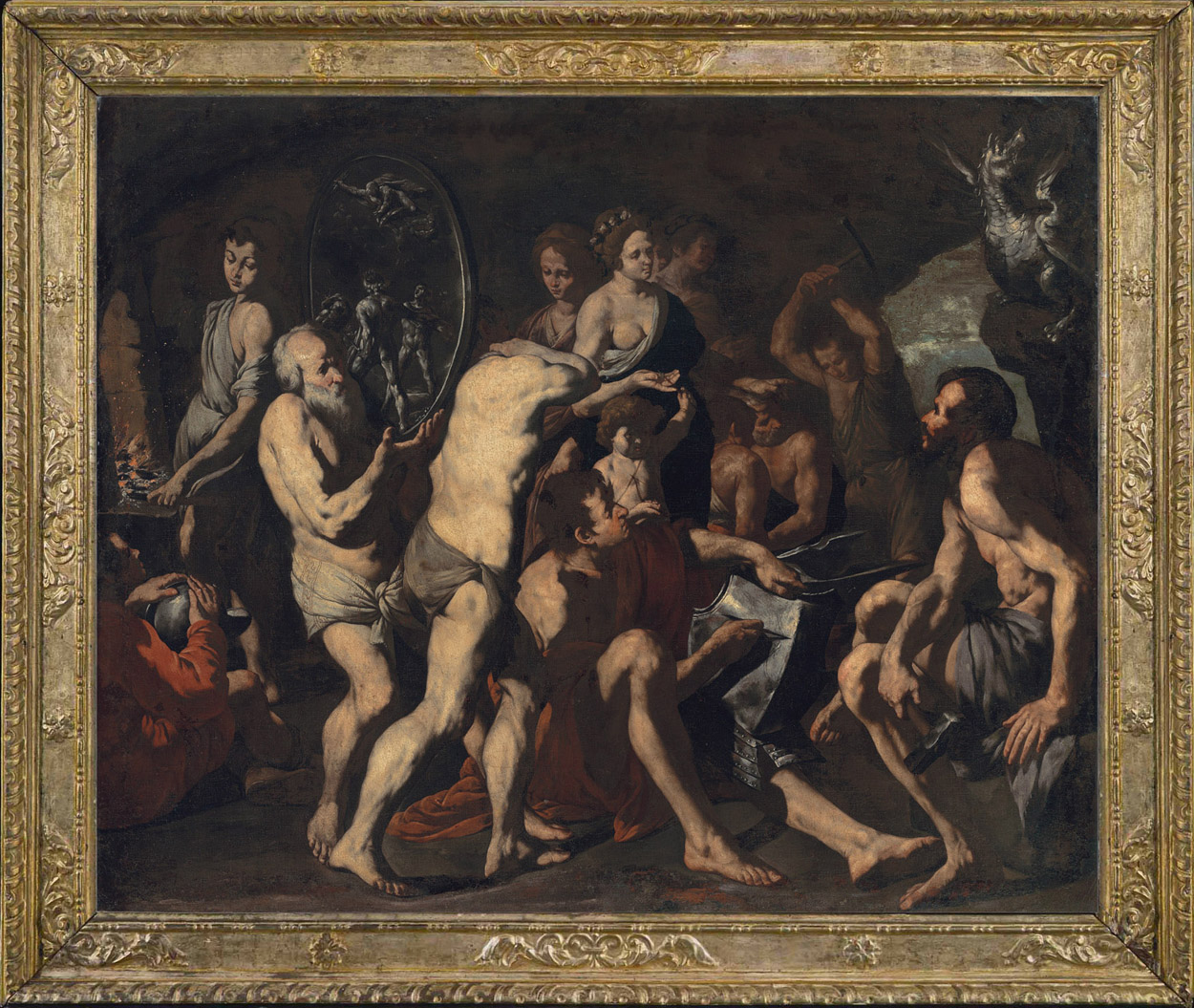
17th century Southern Italian architectural cassetta - entablature frame, with carved foliate scrolls at corners and centres with intermediate rosettes; gardened outer rail; astragal-&-double-bead sight; lacquered silver leaf (‘Meca’) finish
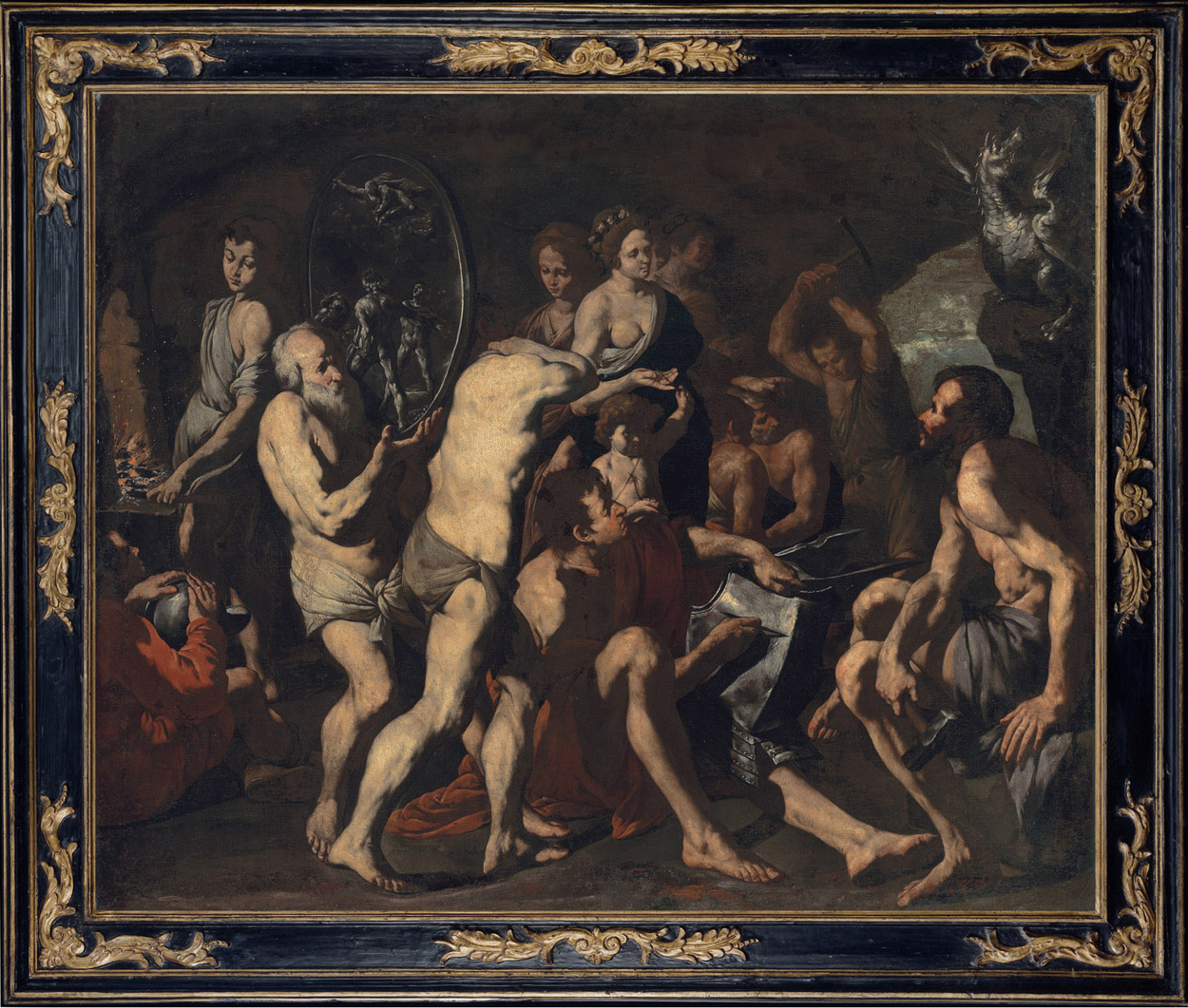
17th century Florentine Baroque extremely rare cassetta - entablature frame, with carved stylised foliate scrolls and corners and centres, parcel water gliding and black tempera finish
We shared our client's view that having corner and centre decoration helps to align the figures in the painting, whilst the contrast provided by the parcel gilt (black & gold) finish of the latter frame illustrated, complements the chiaroscuro element, adds drama and movement in the picture.
Since our period frame now houses Gregorio Pagani’s St Hieronymus in the Liechtenstein Museum, Vienna, we were commissioned to produce a handmade replica.
Images below capture part of the production stages, including the carving of the foliate scrolls and gilding.
As always I can safely say the reproduction is a clone of the original thanks to our highly talented carvers and gilders.
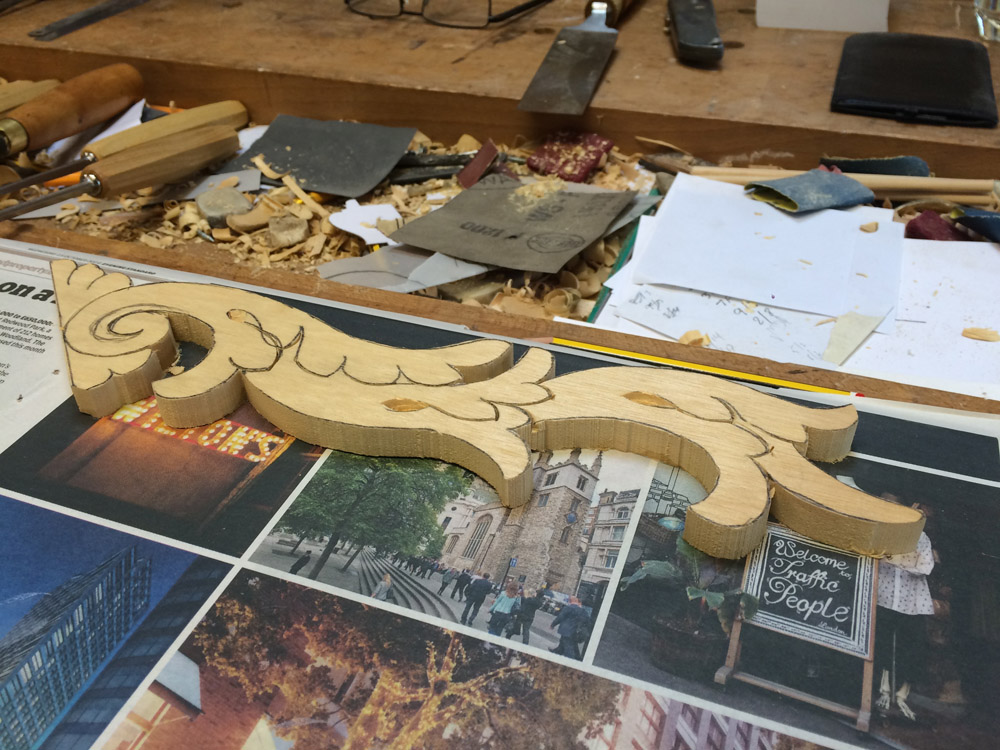
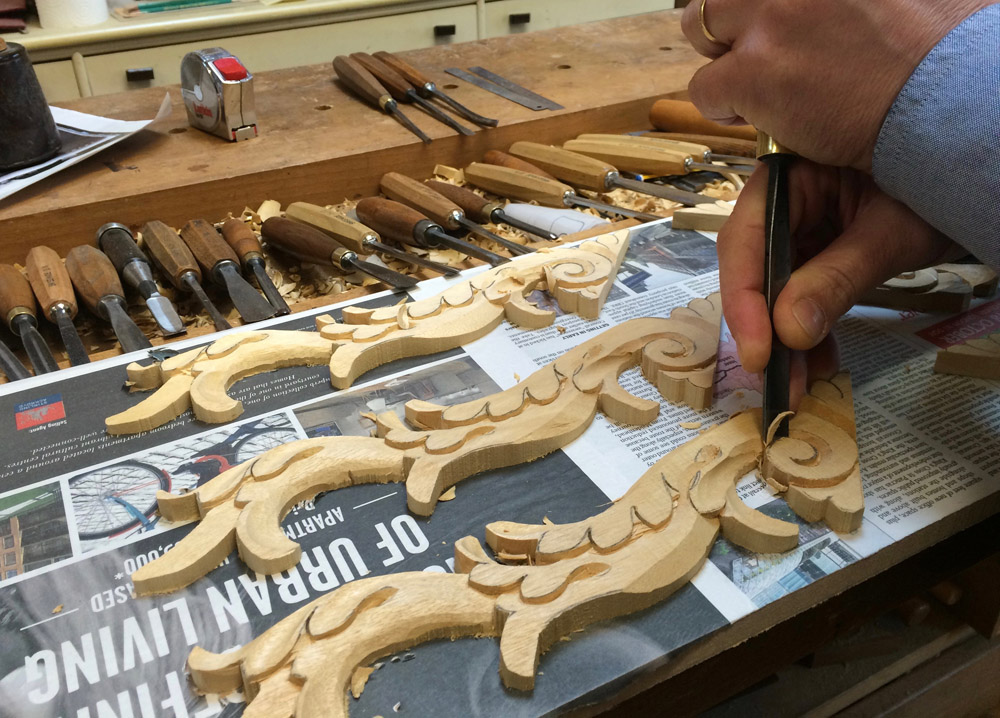
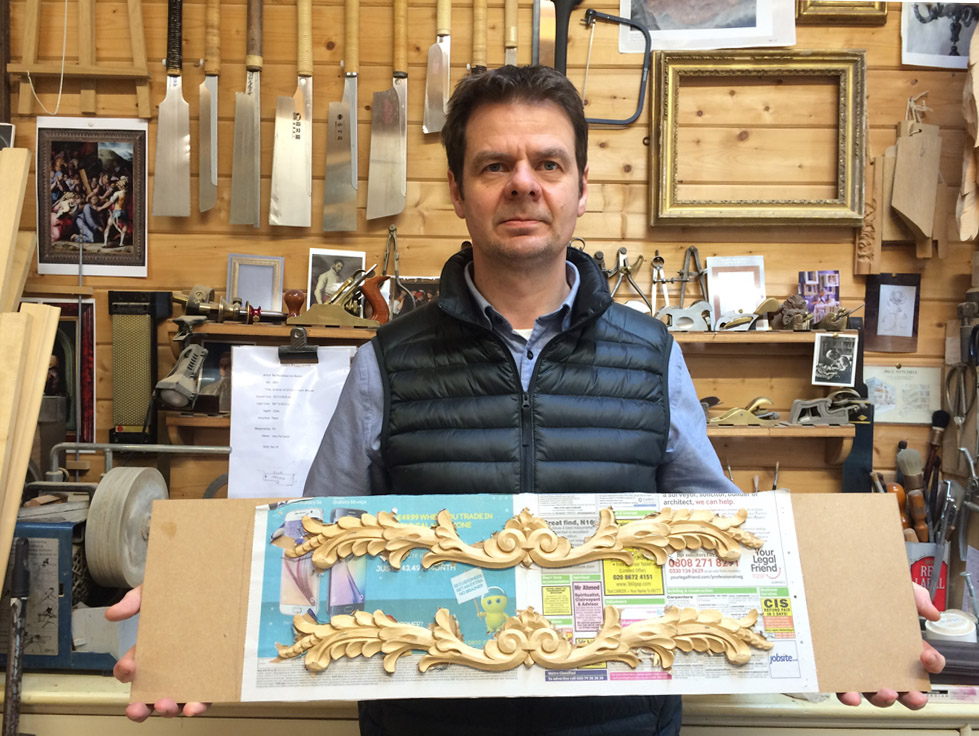
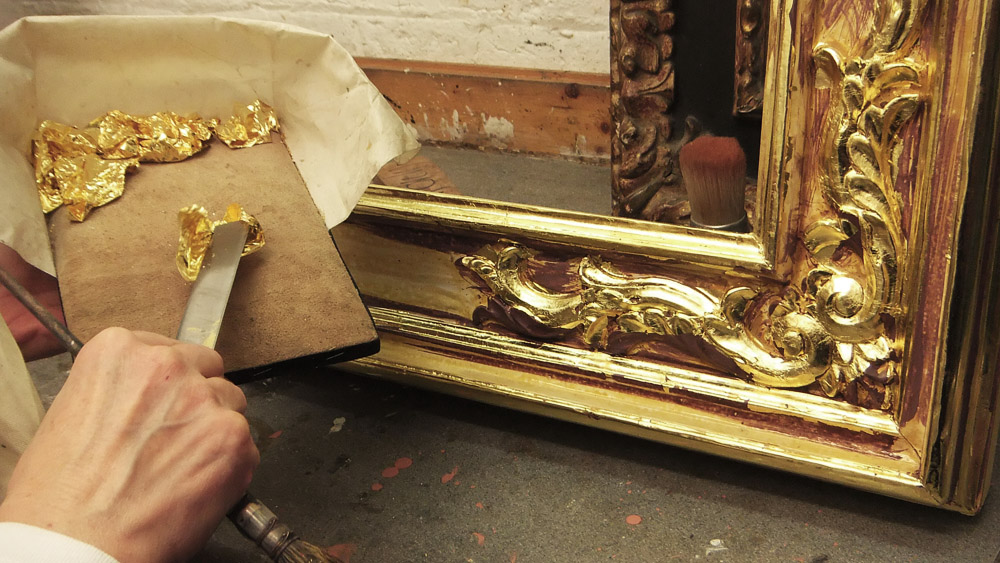
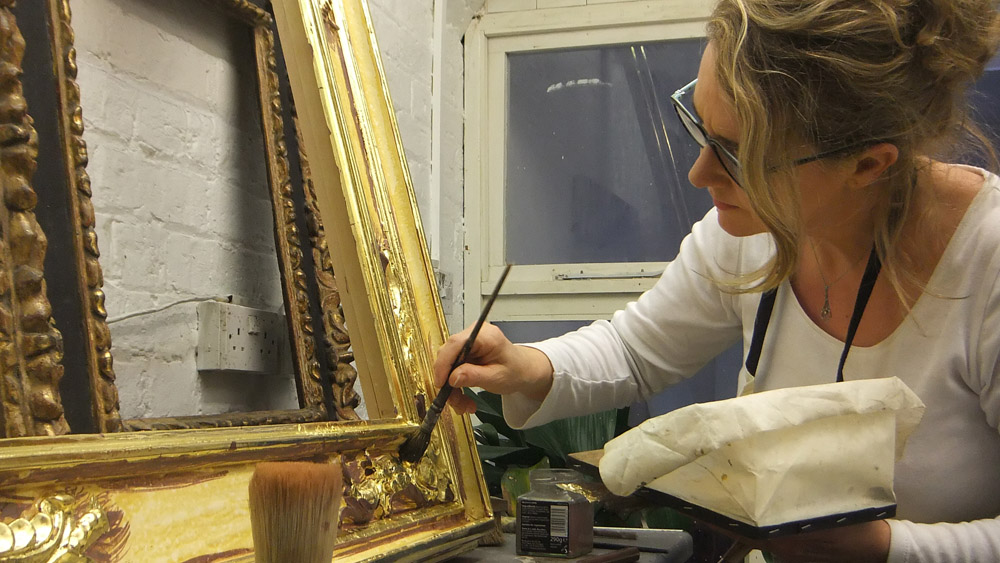
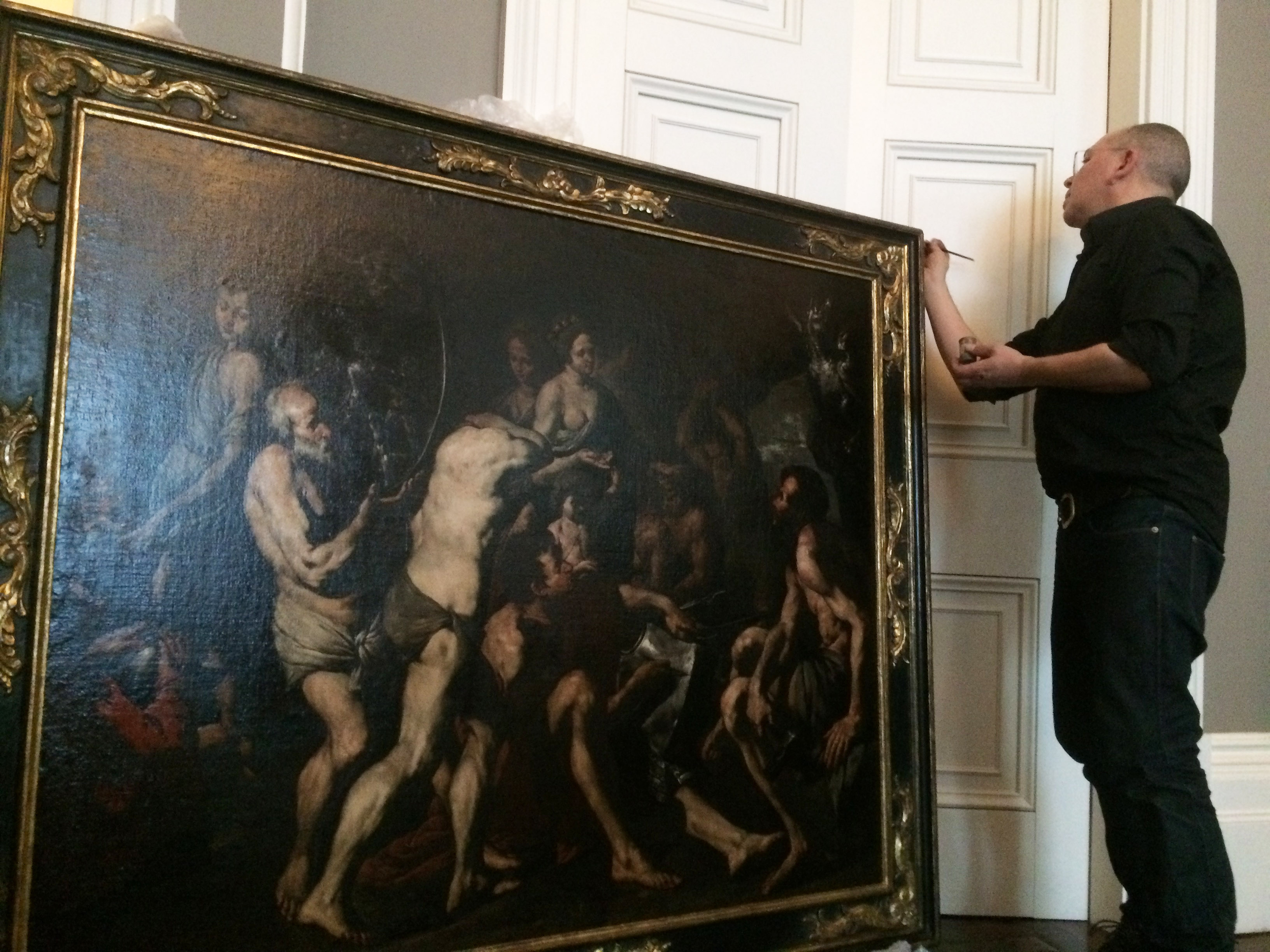
Please click here to view illustrations of the process in making handmade replicas; examples of antique models adjacent to their copies and further case studies.
